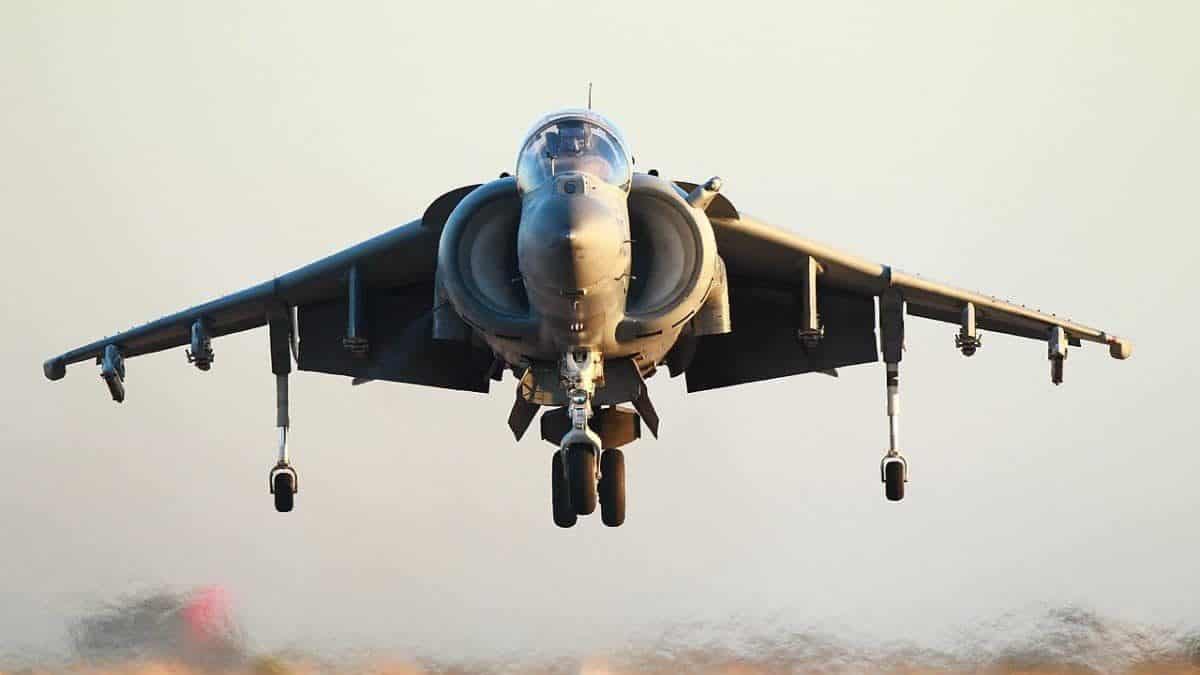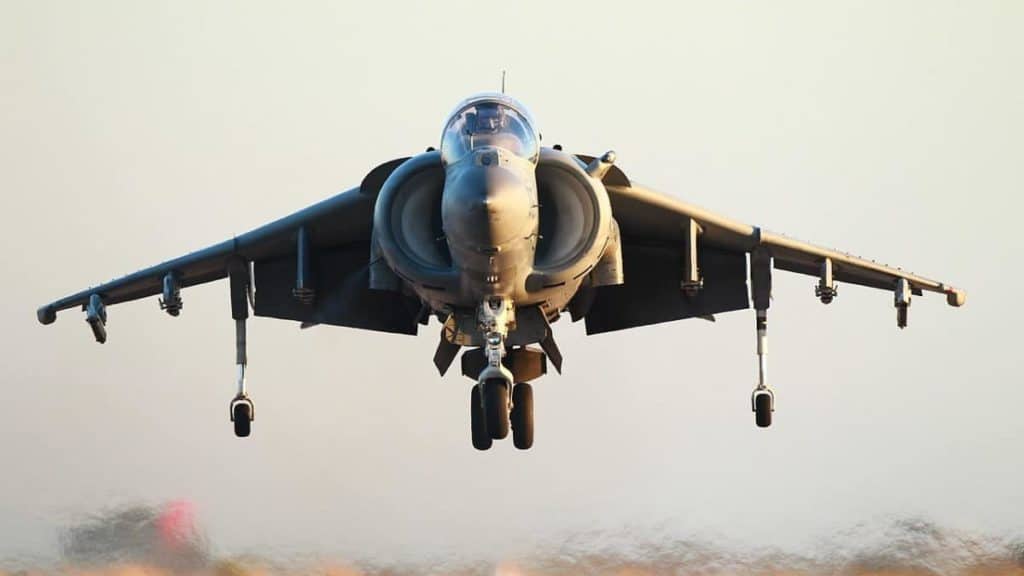
As uncommon as it is, you may have seen a plane that has seemingly just “stopped” midair, and are asking yourself what you actually saw. Are your eyes playing tricks on you? There are a few military airplanes that can hover like the BAE Harrier and Lockheed Martin F35B Lightning, but are they the only ones?
No civilian airplane can hover in flight, but some aerobatic aircraft with powerful engines can create enough thrust to offset their weight and hang under their propellor, known as Prop Hanging. Very light aircraft like the SuperCub have large wing surface areas and can fly slow enough to almost hover.
The need for an airplane to hover outside of the military is very small so the cost for a manufacturer to develop such an aircraft has no return on investment. There are however a few exceptions with some airplanes being able to practically hover, so if you would like to know more please read on…
Why Can’t All Airplanes Hover?
Airplanes need air flowing over their wings to generate lift. Lift needs to be greater than the airplane’s weight for it to lift off the ground. Airflow is either achieved by natural wind or thrust from an engine/s. Large airplanes need more airflow than wind can provide so forward speed is required.
Planes fly by getting air to flow over their wings, which are aerofoil-shaped. This shape creates an envelope of air around the wing with lower pressure above than below, thus creating an upward force (Lift).
The bigger and heavier the airplane, the more lift it needs to generate to get it off the ground. This means larger wings and more airflow over them. There becomes a point when airplanes are too big and need too much air flowing over their wings to lift off without forward speed. Hence why almost all planes need a runway to lift off.
With smaller aircraft, they can have very large wing surface areas that generate large amounts of lift for their size. Add to this a very lightweight fuselage and an airplane can lift off with very little airflow over its wings. Some very light/small aircraft can even lift off with a very, very strong headwind. (More on these later!)
Are There Planes Designed to Hover?
There are military airplanes that are designed to hover: BAE Harrier, Lockheed Martin F35B Lightning II & Yakovlev Yak-38 Forger. Hybrid aircraft like Bell/Boeing Osprey, Leonardo AW609, Airbus X3 & Sikorsky X2 are now becoming available that can hover and fly at airplane speeds and altitudes.
Being able to hover and fly at airplane speeds is the latest engineering challenge in aviation. Mainly confined to the military which has had hovering-capable aircraft since the first BAE Harrier rolled off the production line in the 1960’s, the civilian sector is now joining in.
Known as Vertical Takeoff and Landing (VTOL), the capabilities are achieved in three ways:
1. Thrust Vectoring – Thrust from engines is diverted towards the ground so as to push the plane upwards. Control is achieved by jets of air being released at the tips of the wings and at certain points around the fuselage – Similar to how rockets work in space.
An example is the F-35B Lightning II or BAE Harrier.
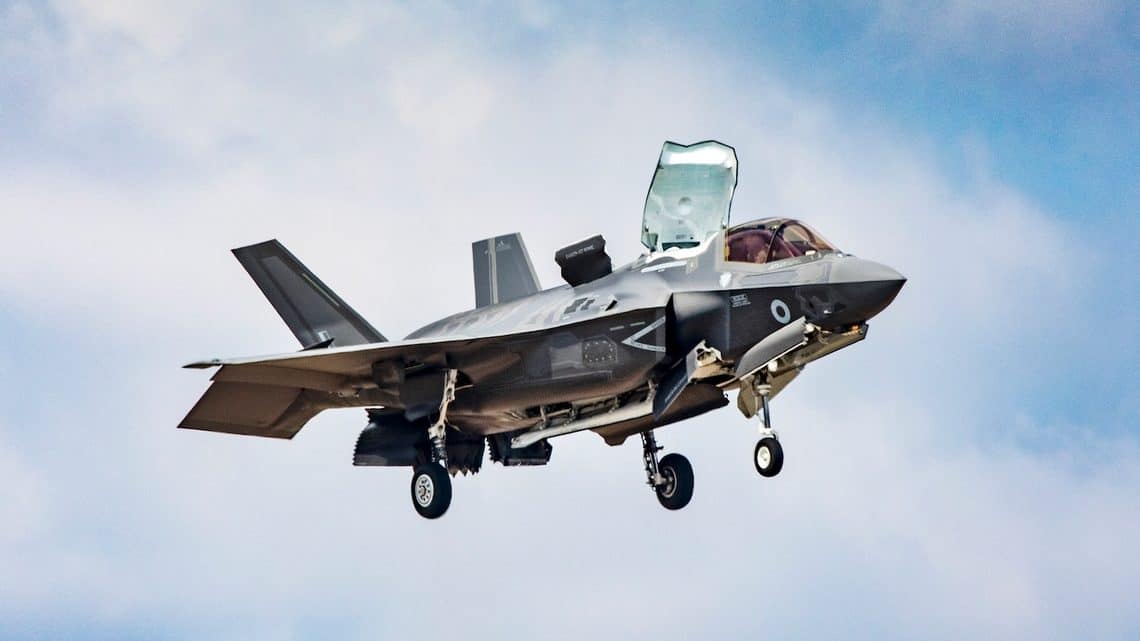
2. Tilt Rotors – Turboprop engine nacelles are placed at the tip of each wing. These engines can change orientation to face upward during takeoff and landing (like helicopters), or forward during forward flight (like normal turboprop-engine-powered planes).
Tilt rotors are used in the V-22 Osprey or AW609.
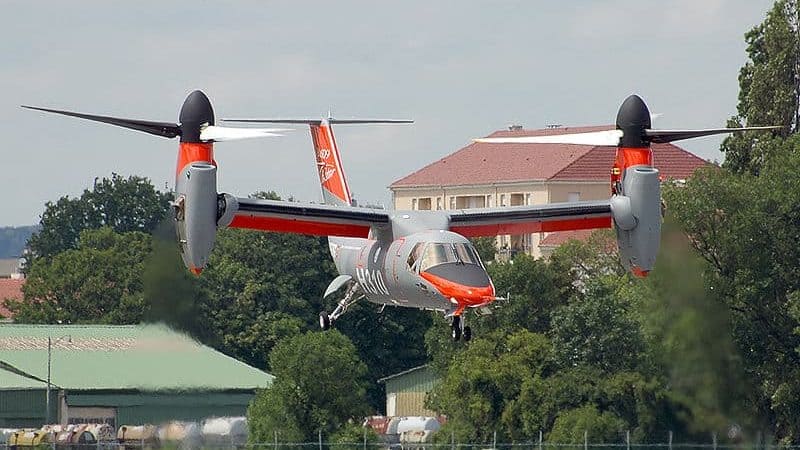
3. Compound Helicopter – Although not a true airplane these are the latest in aircraft development and are pushing the speed envelope of helicopters past the 250knot mark to allow an aircraft to hover, yet fly at airplane speeds. They will never reach the speed of an airliner or military jet but have to potential to be game changers.
Compound helicopters are the Airbus X3 and Sikorsky X2.
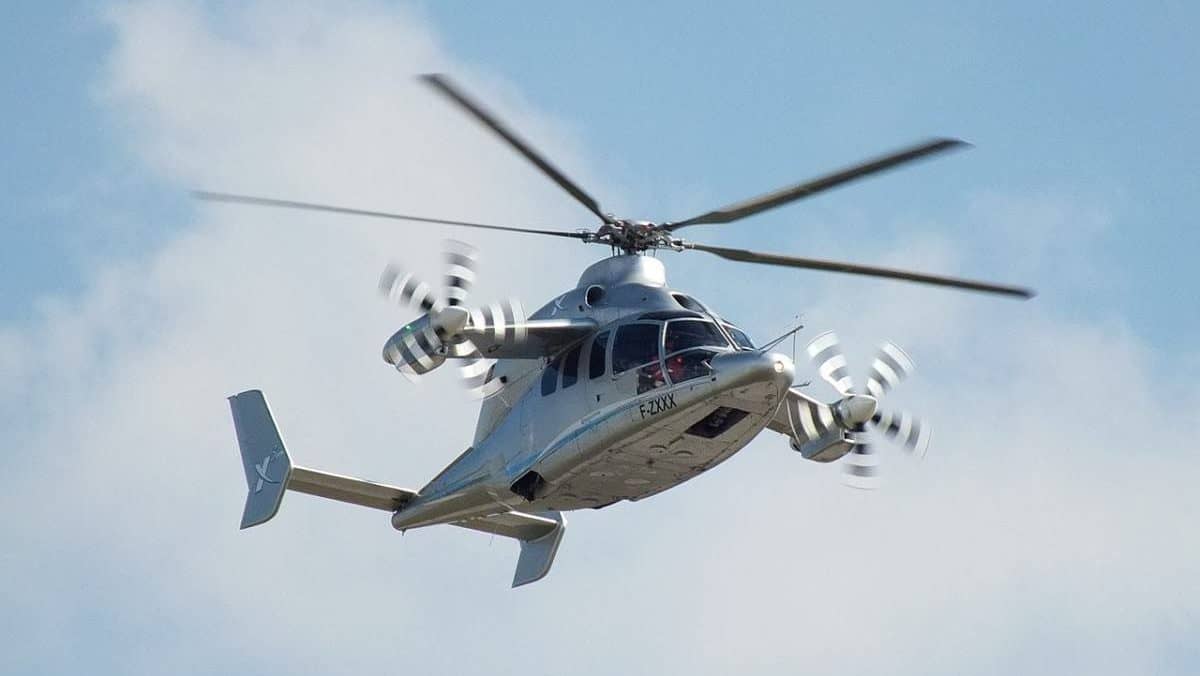
Learn More…
Try These Articles:
* Hovering Helicopters: How Do They Do That?
* This Is Why Pilots Reduce Thrust After Takeoff
Can Civilian Planes Hover?
No civilian airplane can hover in a conventional sense like a helicopter. Airplanes like the Hushy are designated as STOL – Short Takeoff and Landing, meaning they required very little distance to become airborne (under 10 feet for the World Record). Some Aerobatic planes can hover by ‘Prop Hanging’.
Let’s take a look at some civilian airplanes that come really close to hovering:
Light Aircraft
Light aircraft such as the Piper Super Cub can practically hover when the conditions are right. This requires a combination of strong headwinds and slow flight. Slow flight is straight-and-level flight done just a few knots (3-10 knots) above the plane’s stall speed with a wind gust that also needs to be above the plane’s stall speed.
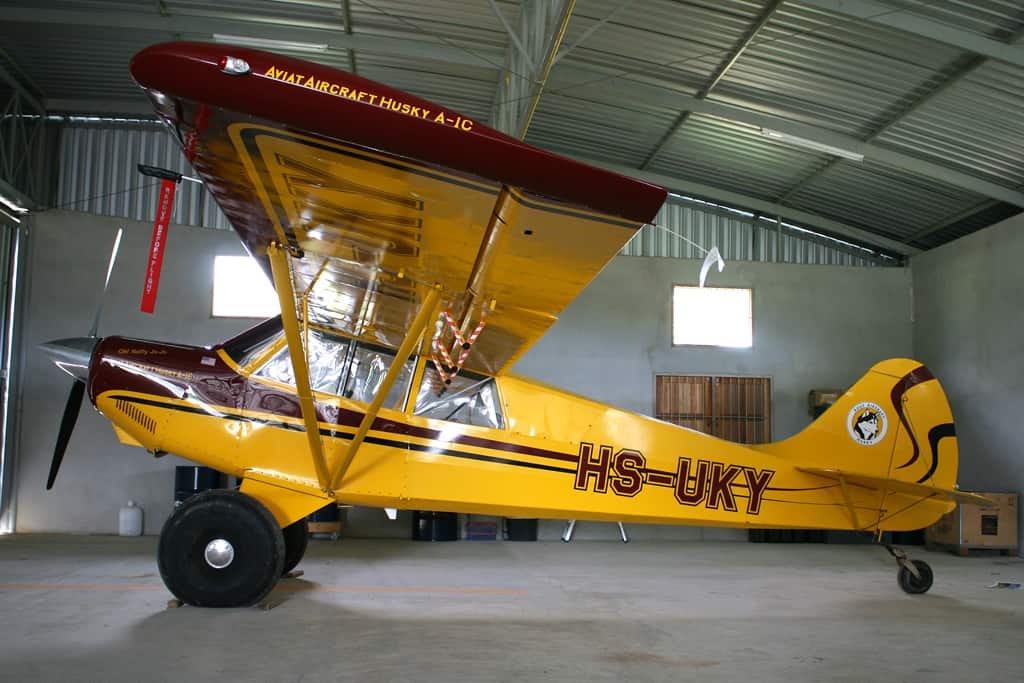
The pilot directs the plane directly into the gust and configures it for slow flight. This typically involves a landing configuration where the flaps and landing gear are extended as done during landing. The throttle is pulled back and the plane sufficiently pitched up to reduce airspeed while still maintaining altitude.
If the plane’s airspeed exactly matches the headwind speed, the plane’s ground speed becomes zero. The plane does not move relative to the ground, therefore hovering above a specific point on the ground.
Where the headwind exceeds the plane’s airspeed, the plane would have a negative ground speed; it would actually move backward relative to the ground. This would need to be a strong wind!

Join My Newsletter & Get Great Tips, Information and Experiences To Help You Become a Superb Pilot!
STOL Planes
Hovering in headwinds usually isn’t possible near the ground as wind speeds near the ground are generally low and unsteady. Some planes, however, are designed to perform extremely short takeoffs and landings (STOL).
These planes have been designed with wing designs to create high lift coefficients and a high wing angle of incidence while on the ground. This ensures that a high angle-of-attack is achieved while still on the ground. In other words, create a boatload of lift even when sitting stationary.
In Valdez, Alaska, the cool, steady sea breeze at sea level makes it possible to perform short takeoffs and landings. This has made it a hub for STOL competitions. Records of takeoffs and landings made with less that 10 feet of runway have been set in such competitions. These aircraft can even takeoff, hover at low altitudes, fly backward, and land at the same spot when conditions are suitable.
VTOL Planes
The only civilian aircraft with Vertical Takeoff and Landing capabilities is the Leonardo AW609 mentioned above. Currently in development, this tiltrotor is being aimed at the Offshore, EMS, VIP, and Search & Rescue sectors once certified and released for production any year now.
Built on the research and design of the Bell/Boeing V22 Osprey when Leonardo was Agusta-Bell, this aircraft is the only real civilian airplane able to hover and fly over 200 knots, although the compound helicopters are not far behind!
Aerobatic Planes
Some aerobatic planes have high-powered engines with weight-to-thrust ratios greater than 1. This means that they can produce thrust equivalent to or more than the plane’s weight. Consequently, they can maintain a positive climb or even come to a dead stop with the nose pointed straight up.
The thrust created by the airplane’s propellor creates sufficient airflow over the wings to sustain this kind of maneuver.
Such planes can, therefore, hover by climbing with a nose-up attitude and reducing power such that the upward thrust produced by the engine is exactly equal to the plane’s weight.
The two forces cancel out and the plane’s weight effectively “hangs” on the propellor. This is why the maneuver is called a ‘Prop Hang’. It is only done by planes with a piston engine and propellor as fine throttle manipulation is required. Gas turbine engines do not react fast enough to throttle adjustments to maintain control in a hover.
Can Passenger Planes/Airliners Hover?
For airliners like Boeing 737 or Airbus A380s, hovering is impossible. The stall speed of a B737 is 108 knots and a sustained wind would need to surpass this for the aircraft to remain off the ground. Engine power is not enough to allow the airliner to fly vertically and hang in mid-air.
The weight-to-thrust ratio of a Boeing 737 is about 0.3. This means that its engines are unable to maintain a positive climb rate with the nose pointing straight up and maintaining sufficient airflow over the wings.
As mentioned earlier, aircraft that are able to ‘Prop Hang’ have a thrust ratio of 1. Airliners have no need to try and hover therefore the designers do not need to incorporate this into the aircraft’s design. For the foreseeable future pretty much every airplane will need a runway for landing and taking off.
I Saw an Airliner Hovering!
There are many videos trending online where an airliner seems to be hovering as they near the landing. You may have experienced this too, but it’s all an optical illusion.
Humans are poor at judging the speeds of objects at great distances. It all boils down to the fact that we perceive the speeds of objects using angular velocity, not their actual speed. This means our brains estimate speed by how fast an object moves across our cone of vision.
A plane moving at landing speeds of, say, 150 knots would zoom right across your cone of vision in seconds if it were right in front of you. The same plane would take minutes to cross your cone of vision at longer distances as the cone becomes bigger with an increase in distance. The plane thus appears to be going much slower.
The phenomenon of hovering airliners usually occurs when the observer is moving in a car and the plane is landing in the opposite direction. The eye tries to keep the plane in its center of vision, creating a resting point where nothing seems to be moving as the angular momentum is too small to be perceptible. The two illusions make the plane appear motionless.
Objects in the foreground, like trees moving backward as the car moves forward, and massive clouds in the background at greater distances that appear to move along with the car work to make the plane appear even more motionless.
When a plane coming in for a landing is observed directly in front of it, it may seem to hover. This is because humans also use the rate of change of an object’s size to determine its speed. A plane approaching the runway would have a lower speed than usual and, therefore, the plane’s change in size would be too small to be perceptible. This would make it appear to have stopped midair.
Learn More…
Try These Articles:
* Before Taking Off – What Do Pilots Check?
* How Much Do Airplanes Weigh? (With 20 Examples)

